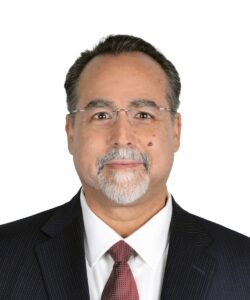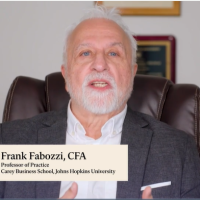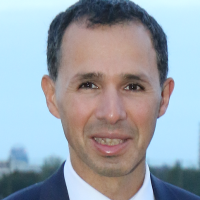Kenneth Blay, Head of Research-Global Thought Leadership at Invesco, brings a unique perspective to investment research, drawing from more than three decades of experience across trading, asset allocation, and economic modeling. In my interview with him, Blay reflects on the evolution of fixed income investing, the practical integration of macroeconomic signals into portfolio strategy, and the complementary relationship between qualitative judgment and quantitative frameworks.
Rethinking the Active–Passive Divide
Among Blay’s research initiatives is his recent monograph for CFA Institute Research Foundation, “Beyond Active and Passive Investing: The Customization of Finance.” Coauthored with Marc Reinganum, the work challenges the binary view that investing boils down to a choice between active and passive. Drawing on global data from 1989 to 2021, they show that passive strategies — while headline-grabbing — are largely concentrated in US large-cap blend equities. Outside that narrow slice, active management still dominates, especially in value, growth, and fixed income segments. The research urges a deeper look at how portfolios are actually constructed and for what purpose.
Blay’s central argument is that the real transformation in asset management isn’t about the tools, it’s about the intent behind them. “Customization is active management,” he says. Whether the goal is tax efficiency, ESG alignment, or tailored liability matching, building portfolios around specific investor needs requires human judgment, not just algorithmic replication. That shift from pooled products to personalized solutions demands new infrastructure, deeper advisor collaboration, and a different kind of talent. In a world where ETFs are used as surgical instruments, the lines between passive implementation and active design are blurring fast. And the asset managers who succeed will be the ones who understand both sides of that equation, he challenges.
From Wall Street to Invesco: A Career Bridging Macro and Markets
Blay’s early career was rooted in economic research and central bank policy analysis, shaped by his time at Lehman Brothers and Bankers Trust. Over time, he transitioned into roles that demanded greater market proximity, culminating in his current position where he bridges macroeconomic forecasting with portfolio construction. He emphasizes that his focus has always been less about finding “alpha” trades and more about understanding systemic shifts and identifying the key drivers behind interest rate and credit market behavior.

Models, Markets, and Human Judgment
A key insight Blay shares is that the most effective fixed income investors combine intuition with models. While systematic strategies and machine learning are increasingly prevalent, Blay notes they are often better at prediction than explanation. His team utilizes tools such as principal component analysis (PCA) to track shifts in macroeconomic sentiment or growth versus inflation dynamics. Still, he stresses that the ultimate interpretation requires judgment honed through experience. In his view, models “tell you what’s changing,” but not always “why.”
Blay describes the evolution of fixed income research from a siloed, asset-class-centric function to one that is more collaborative and interdisciplinary. At Invesco, his team engages in regular dialogue with equity and multi-asset teams, ensuring that their views on the macro environment inform broader asset allocation decisions. This cross-pollination has been especially critical in recent years, given the complex interactions between monetary policy, inflation expectations, and risk assets.
Scenario Planning and the Limits of Forecasting
On forecasting, Blay is candid about its limitations. He advocates for a scenario-based approach rather than point forecasts, emphasizing the importance of understanding tail risks and regime shifts. His team prepares “what-if” narratives to help portfolio managers stress test positions, a process that became particularly relevant during the pandemic and subsequent inflation spike. He also discusses the challenge of incorporating geopolitical shocks into investment frameworks, noting that while markets tend to react sharply in the short term, the longer-term macro implications are often less predictable.
On Mentorship and Building Research That Matters
When asked about mentorship and career development, Blay underscores the importance of intellectual curiosity, humility, and the ability to communicate complex ideas. He believes that good research must be accessible to decision-makers and should inform action, not just understanding. He encourages young professionals to pursue breadth before specialization and to build credibility by consistently providing insights that help portfolio teams navigate uncertainty.
Experience as Edge in a Data-Driven Era
In closing, Blay reflects on the enduring value of experience in a data-driven world. While tools and data sets continue to evolve, he believes that context, judgment, and the ability to synthesize diverse information remain the defining traits of successful investors. His insights provide a thoughtful perspective on the integration of human expertise and systematic tools in contemporary fixed income management.






